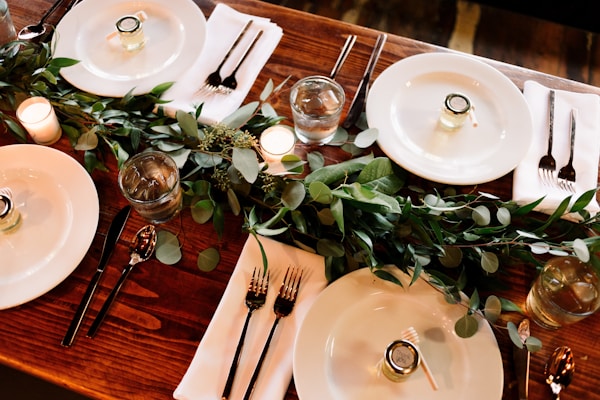Mastering the Art of Wedding Dress Fitting Sessions with Delicate Elements
Planning a wedding is an exhilarating yet challenging experience, especially when it comes to selecting the perfect wedding dress. One of the most critical steps in this process is managing the fitting sessions, particularly when the dress features delicate elements. In this article, we will explore how to navigate the intricacies of fitting sessions, ensuring that your dress not only fits flawlessly but also retains its delicate charm. We will answer the key question: How do you manage fitting sessions for a wedding dress with delicate elements?
Understanding Delicate Elements in Wedding dresses
Before we delve into the management of fitting sessions, it is essential to understand what we mean by delicate elements. Wedding dresses may include:
- Lace appliqués
- Beading and sequins
- Sheer fabrics
- Intricate embroidery
- Delicate lace trims
These details require special attention during fittings to preserve their beauty and integrity. It is important to approach each fitting with care and planning.
Planning Your Fitting Sessions
The first step in successfully managing fitting sessions lies in planning. Here are some essential tips:
- Schedule Early: Book your fitting sessions as soon as you secure your wedding dress. Ideally, you should have at least three fittings: the first for initial adjustments, the second for refinement, and the last one for final touches.
- Consult Experts: Hire an experienced seamstress who specializes in Wedding dresses, particularly those with delicate elements. Their expertise will ensure your dress is handled with the utmost care.
- Prepare Your Dress: Ensure that you bring any accessories you plan to wear, such as your veil, shoes, and any specific undergarments. This will help you and your seamstress visualize the complete look.
Creating a Fitting Session Timeline
To give you a clearer picture, here's a sample timeline for managing your fitting sessions:
| Timeframe | Action |
| 6-8 months before | Order your wedding dress. |
| 3 months before | First fitting session for basic alterations. |
| 6 weeks before | Second fitting for more detailed adjustments. |
| 2 weeks before | Final fitting and adjustments. |
| Days before | Pick up the dress, complete with any last-minute touches. |
Managing the Fitting Process
Once you have scheduled your fitting sessions, management becomes key. Here are some best practices to ensure smooth fittings:
- Communicate Clearly: Clearly convey any concerns or preferences to your seamstress. Discuss how you want the delicate elements to sit on your body, and be specific about any adjustments you wish to make.
- Try Different Options: Don’t hesitate to experiment with various adjustments during your fittings. For instance, if the lace appliqués are too tight, ask your seamstress about alternative placements.
- Keep it Polished: Be aware that delicate fabrics can mark easily. During fittings, avoid wearing makeup or products that might transfer onto the dress.

Fitting Tips for Delicate Embellishments
When working with delicate embellishments, there are several additional considerations:
- Gentle Handling: Ensure that your dress is handled gently during fitting sessions. Delicate beading or lace can easily be damaged if pulled or tugged.
- Consider the Weight: If your dress has heavy embellishments, be mindful of how they may affect the way the dress sits. Adjustments might be necessary to account for this weight.
- Storage Matters: Store your dress in a breathable garment bag when not in use to protect its delicate elements. Avoid plastic, which can trap moisture and cause damage.
Post-Fitting Care
After you are thrilled with the fit of your wedding dress, it’s crucial to focus on post-fitting care:
- Final Inspection: During the last fitting, take the time to do a thorough inspection of your dress, focusing on areas with delicate elements to ensure everything is secure and perfect.
- Cleaning Protocol: Discuss with your seamstress about cleaning your dress post-wedding. Some embellishments require special cleaning methods to prevent damage.
- Preserving the Dress: If you plan to preserve your dress, ensure that your chosen service understands how to handle delicate elements.
Simplifying Your Bridal Journey
Your wedding dress is a significant part of your big day, representing not only your personal style but also the effort you’ve invested in planning. Here are a few additional tips to help with your bridal journey:
- Document Progress: Take photos during each fitting to track changes and improvements. This can help you visualize the entire process and make each step more enjoyable.
- Allow Extra Time: Ensure you never rush your fittings. Allot enough time between appointments to think over discussions with your seamstress.
- Stay Positive: Fitting a wedding dress can feel overwhelming, especially with delicate features. Maintain a positive mindset and trust your stylist’s expertise.
Conclusion: Managing Your Wedding Dress Fitting Sessions
Managing fitting sessions for a wedding dress with delicate elements can be a fulfilling experience when approached methodically. From understanding the specifics of delicate embellishments to planning and communicating effectively, each step is vital for achieving the perfect fit. Remember, your wedding dress is not just an outfit; it's a cherished keepsake of one of the most significant moments of your life. By following the tips and suggestions outlined in this article, you can navigate your fitting sessions with confidence, ensuring that your dress not only fits beautifully but also highlights the delicate elements that make it uniquely yours. Be sure to embrace the journey, and trust the process.